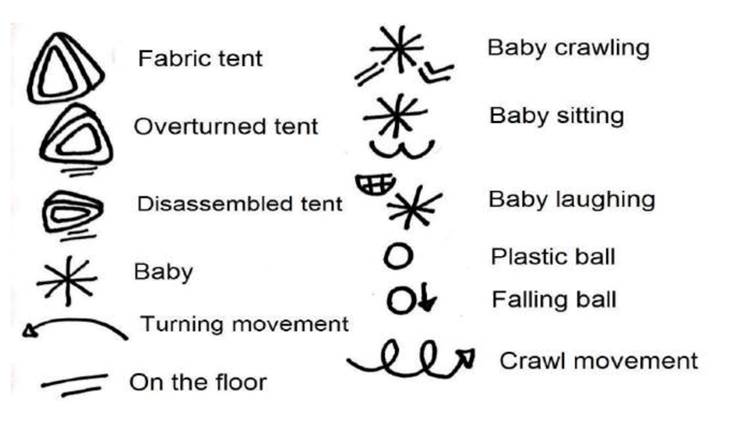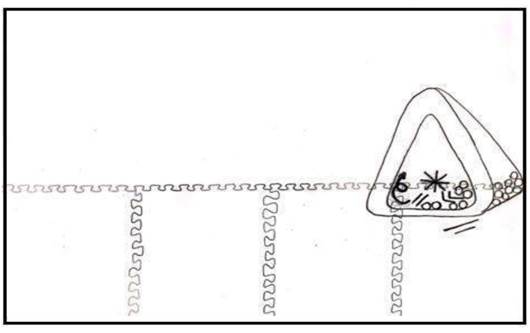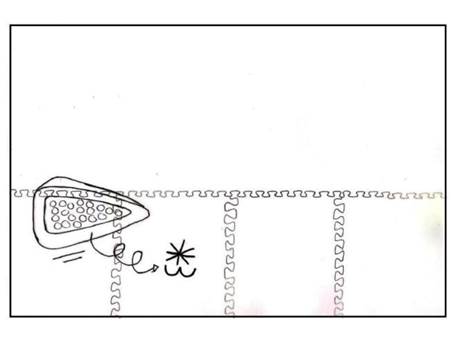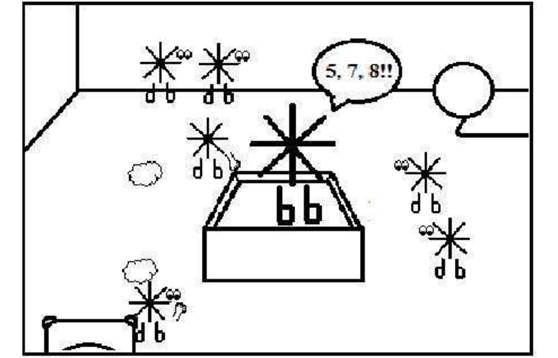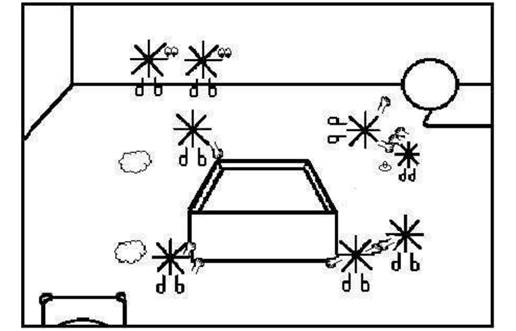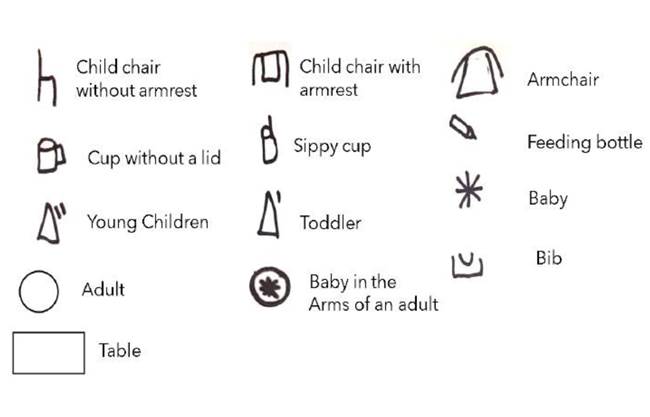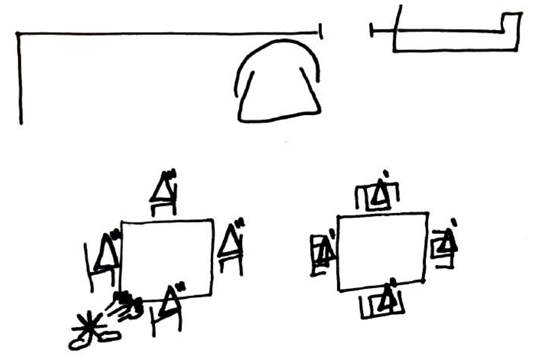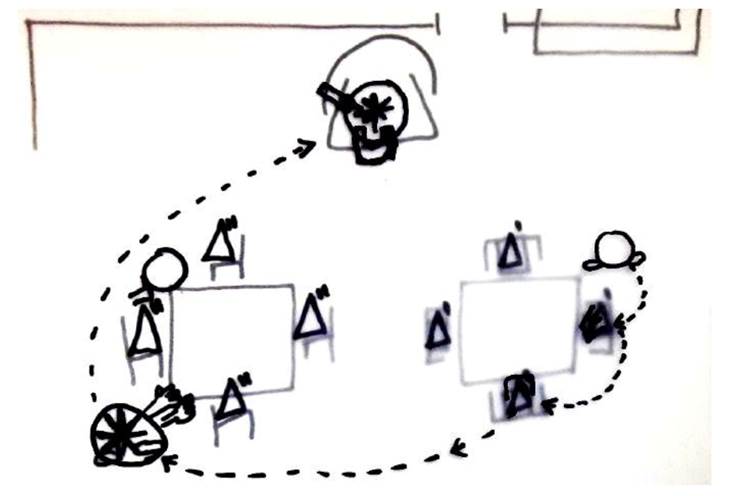introduction
This article presents partial results of a collective project developed between 2018 and 2020. Part of the Early Childhood Education space comprehension involves understanding the materials present and brought to the specific moments for babies. However, the bibliographical research conducted on the Scielo and Scopus platforms searching materiality and childhood, materiality and early childhood education, and materiality and art showed a relatively new debate in the academic field and the existence of few articles. A survey conducted in Scielo with the search engine “materialidade“ on August 12, 2019, found only 26 articles, none of which concerned early childhood education or young children. When searching Scopus using the same term, we found nine studies, but none focused on early childhood education or pedagogy. And much less for babies.
That said, we emphasize that it is essential to verify the role of objects in early childhood education in general, and for babies, in particular. From this perspective, we ask: to what extent are such objects understood, how are they conceived, and how do babies use or reinvent them? These are some questions we need to ask ourselves.
As part of the documentary research conducted, we turned to an analysis of documents that guide the early childhood education curriculum at national (Brazil and France) and municipal levels (in three different cities in the state of São Paulo: São Paulo, Campinas, and Vinhedo) and what they indicate about the materiality of everyday practice in early childhood education.
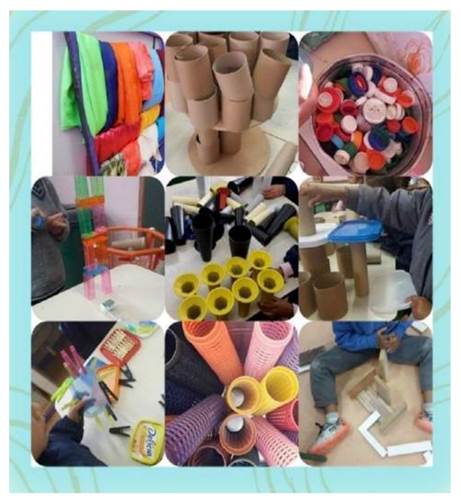
Figure 01: Diversity of Materials in Early Childhood Education. Recorded by Lidiane Cristina Loiola Souza (2016).
There is a large set of specificities regarding proposals for early childhood education of babies in France and Brazil, both in terms of the number of babies in each day care, the policy of charging or not fees, professional profile of the workers in the day care center, and concerning the proposed curriculum. Some of these elements were developed by Impedovo and Tebet (2019) and Tebet, Impedovo, and Pontes (2021). In this article, we will turn to the issue of the curriculum and how the relationship between babies and objects is present in the daily life of early childhood education.
In France, there is a distinction between day care center and nursery schools and different curriculum guidelines for each institution. According to an OECD report (2015) in France, the education of babies and children up to 2 or 3 years old in day care centers is the responsibility of the Ministry of Social Affairs and Health. From 2 or 3 years old, the education provided in nursery schools is offered and supervised by the Ministry of National Education.
In Brazil, there are day care centers for babies and children up to 3 years old, preschools for children between 3 and 6 years old, and Early Childhood Education institutions that serve from babies to children who turn six years old throughout the school year. Families can seek out public, fully government-funded day care centers run by religious institutions, NGOs, or private ones. About 36% of babies and children up to 3 years old attend some kindergarten institution at the option of the family, and from 4 years old onwards, education becomes mandatory. From the age of 6, Brazilian children start attending elementary school. Early childhood education is defined in national legislation as a duty of the State and children and families’ rights. Thus, parents’ work should not be a criterion for enrollment (although sometimes it occurs when the number of places is insufficient). In the country, both the day care center and preschool are the responsibility of the Ministry of Education and follow the same curricular guidelines.
Analysis of French documents indicates that most cities have a day care center (or Garderies) for babies aged two months to 3 years, usually adjacent to the local school. Most commonly, day care centers are operated by local businesses or non-profit organizations, made up primarily of parents, offering care that can range from part-time to full-time. Due to the number of places available, priority is given to children of working families, who pay a small fee for day care services, proportional to their income, to cover the costs, generally subsidized by the city hall. There are also reception centers, called halte-garderies, which offer part-time and occasional care for non-working parents. However, in neither case, there is a national document that guides the curriculum of day care centers in France.
On the other hand, nursery schools have a completely different character from day care centers and are understood as preparation for attending primary school. Play and playfulness lose their centrality in the proposals, and there is a study plan that children must follow and on which they will be evaluated. The priority of learning in nursery school is language development (both verbal and written), and an assessment of the child’s literacy level is carried out before leaving the nursery school.
In Brazil, the National Curriculum Guidelines for Early Childhood Education establish guidelines for both day care and preschool, and both must have their curriculum based on interactions and plays. Both item 7 and item 8 of the document highlight the importance of how the materials are organized (Brasil, 2010, p. 19 - 21). Such items point out that the organization of materials must contribute to comprehensive education, which understands the child’s expressive-motor, affective, cognitive, linguistic, ethical, esthetic, and sociocultural dimensions as indivisible. It should also contribute to the “recognition of age specificities” and “appropriation by children of the historical and cultural contributions of indigenous, Afro-descendants, Asians, Europeans, and peoples from other American countries,” among others.
In the scope of the municipalities, the Early Childhood Education Curriculum of the City of São Paulo (2019) highlights the materiality as follows:
The term “materiality” seeks to expand the meaning of materials, which some can understand as those for school use. In the field of materialities, we can have a balloon and also a film, branches or sand, and a clothesline of poetry, tapes, and drums. Natural, cultural, technological elements: all are materialities (São Paulo, Currículo da cidade: Educação Infantil, 2019, p. 36).
Or also:
Materialities group an immense range of objects, tools, instruments that make it possible to investigate, think, invent, reason. Significant materialities are games and toys, everyday objects, artistic, scientific, and technological materials, far-reaching materials such as pieces of wood, pipes, ropes, corks, among others. When planning the materialities available to babies and children, it is essential to consider what experiences we design for them, the diversity and amount of materials, ensuring they can make their individual choices without necessarily doing the same activities at the same time. (São Paulo, Currículo da cidade: Educação Infantil, 2019 p. 135).
In the city of Campinas, the importance of giving children the opportunity to “use and experiment with a variety of materials according to their interests” has been pointed out since the Creation of Children’s Centers (CIs), linked to the Social Promotion Secretariat in the 1970s (Secretaria da Promoção Social, Adm. 1977/1980, s/n, apud Campinas, 2013).
The guiding documents of the curriculum in Campinas keep the conception and appreciation of relationships with different materials. Thus, the Basic Education Curriculum Guidelines for Early Childhood Education in Campinas currently in force reaffirms that:
The curriculum design presented here presupposes intentionality when planning daily times and internal and external spaces beyond the Educational Units themselves, the multiple and inexhaustible availability of materials, the quality of the careful listening relationship, and attentive look at babies and young children, who invent, create, transgress, transform, play, and produce cultures. (Campinas, 2013).
Moreover, in Vinhedo, the Pedagogical Proposal of the Municipal Education Network points to the importance of the relationship with different materials as part of the curriculum, stating that:
Through plays, children exercise their knowledge, are challenged to solve problems, come into contact with different types of materials and spaces that they can explore and organize. Also, they form partnerships and learn to resolve the conflicts that arise, choose the roles they want to play by showing what they know about the culture to which they belong. Through playing, children build their learning in a playful and protected way, launching themselves into the world at their own pace and are affected by the cultural environment (Vinhedo, 2013, p.23).
In France, according to the Conseil Général des Bouches-du-Rhône (2014), the material dimension of the day care center is discussed in space management. It should privilege safety and allow a close relationship between baby and adult without external intrusions (sound or verbal) but respecting the autonomy and individuality of babies.
babies, between materiality and individuation in early childhood education
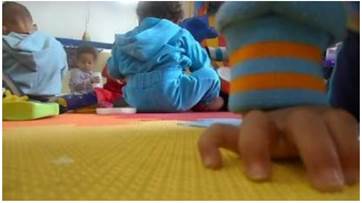
Figure 02: Materialities present in the daily lives of babies in a Brazilian day care center. Recorded by Sabrina de Oliveira
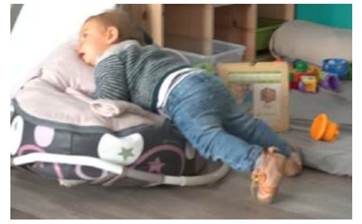
Figure 03: Materialities present in the daily lives of babies in a French day care center. Recorded by Maria Antonieta Impedovo.
This text assumes a direct relationship between materiality and individuation. The latter happens from the encounter of the being with a material and objective world that affects and modifies the being. In contrast, this world is affected and modified by the being. Throughout the research, we explored the concept of Individuation from dialogues with Gilbert Simondon. Based on his concepts of pre-individual condition, we look at the baby as a singularity full of potential and whose updates are not linked to pre-defined models. The study of collective individuation processes from the perspective proposed by the author reveals itself to be decisive for discussions on the transition from baby status to child status.
In addition to what the curriculum guidelines for Early Childhood Education indicate, the role of objects in child development is highlighted by authors such as Impedovo, Andreucci, and Ginestié (2017), who bring the concepts of artifact, tool, and technical object in a sociocultural approach. According to the authors, the artifact is considered an element of mediation, which enables cognitive development. The artifact is an external resource, which makes sense of situations and allows the personal agency’s expression. In this cultural-historical perspective, artifacts are continually created and recreated, and the culture is the accumulation of such artifacts.
For Impedovo, Andreucci, and Ginestié (2017), artifacts can be of different types and attributions, such as tools, technical objects, psychological tools, cultural artifacts, and semiotics. The authors also consider the tool as an object of mediation but with greater complexity.
The technical object, on the other hand, is a particular type of artifact. There is a French approach to this type of material in that research, considered an artifact that brings a technique in itself. In one of the approaches to the concept, it has suffered a human action in its elaboration. Conversely, instruments are hybrid entities, part psychological and part artefactual. For the research consulted, the categorization and social use of the technical object are restricted to the conception of its technicality or technology, conceiving the technical object as linked to technological education.
Regarding the materiality of the objects to be offered to babies, the material is no longer manipulated purely from the object’s perspective to exploration beyond what the material can propose. For example, the baby tends to explore colors, textures, sizes a nd elevate the figure of the object (material) to an exploration focused on the materiality that this same object can provoke. Ostrower (1987) highlights that each materiality initially covers particular possibilities of action and also carries the impossibilities, i.e., by expanding the exploration and experiences with the material, materiality tends to expand to countless experiences. Agreeing with Ostrower (1987), Dewey (2002) emphasizes that the relationship between child, object, and space involves all senses, and thus the material is no longer manipulated, experienced merely by its function. Therefore, they discover possibilities and potentialities of what was proposed. From mere reproducers or consumers, they become producers of culture and subjects of its expression.
Edwards, Forman, and Gandini (1999) talk about the importance of babies exploring, in detail over an extended period, the materiality of objects. Thus, explorations, questions, collections, representations, memories, and ideas give wings to new knowledge.
Therefore, some questions were raised about the dynamics between baby, day care, and technical object. When thinking about the day care, its structure, furniture, materials, toys... What is a technical object? Are they present at the day care? Who decided which objects would be present with the babies? How do day care educators reflect on the use of objects? Is there a specific and “right” use for the objects? And how do babies react and re-signify objects? For this analysis, the study of the Simondonian complementary thesis was fundamental. We also resorted to other authors of the philosophy of difference, such as Deleuze and Guattari. They bring approaches on culture, system, forms of representations, which, linked to the philosophy of Simondon, contribute to the reflection of the dynamics in which Early Childhood Education is inserted while helping to understand the objects present in the day care center.
the conception of technical object in gilbert simondon
The complementary thesis by Gilbert Simondon (2020), entitled “On the mode of existence of technical objects” (MEOT), brings relationships between culture, technique, and objects, the latter being the result of the modification of nature by humans.
According to the author, the technical reality is linked to human reality, and there is no opposition between culture and technique. Furthermore, technical schemes must be integrated into the culture to combat forms of alienation of humans from objects. As the technique is an accurate dimension of the human world, such alienation occurs in the imbalance of culture in recognizing and conceiving objects. While esthetic objects are recognized with particular meanings, technical objects have only practical use or function. On the other hand, technical objects are recognized as sacred objects, granting them a valued status.
Culture thus comprises two contradictory attitudes towards technical objects: on the one hand, it treats them as pure matter, devoid of real meaning and simply presenting a given utility. On the other hand, it assumes that these objects are also robots and that they are animated with hostile intentions towards man or representing for him a permanent danger of aggression (Simondon, 2007, p. 32).
Therefore, the machine is most often conceived as a foreigner. The one in which the human is included, poorly known, materialized, submissive, remaining human. Simondon explains that the most fundamental cause of alienation in the contemporary world lies in this lack of knowledge of the machine. It is an alienation caused by “the lack of knowledge of its nature and essence, its absence from the world of meanings and omission in the table of values and concepts that are part of the culture” (Simondon, 2007, p. 70). Based on this principle, overcoming the alienation mentioned above lies in understanding the essence of objects, as Impedovo, Andreucci, and Ginestié (2017) mention in their studies. Such a contradiction exposed by Simondon in conceiving objects can also be evidenced in contexts of Early Childhood Education. In addition to not recognizing the essence of the objects present in the day care center, their function and functioning are very delimited by adults.
Furthermore, it should be noted that, according to Simondon, the technical world is the world of the collective, which “is not properly thought out, neither from the gross social nor from the psychic” (Simondon, 2020, p. 367). It is in this perspective that the technique is considered a dimension of the human world: “Technical activity is not part of the pure social domain or the pure psychic domain. It is the model of the collective relationship, which cannot be confused with one of the two preceding relationships” (Simondon, 2020, p. 356).
Simondon also adds that it is around the technical activity that the collective group can be born. Considering that the technique is part of the collective relationship, it is essential to highlight how the day care center is a collective in which different techniques are present. It can be found in school staff, kitchen staff, cleaning and administration, and educators. The relevance of this last example lies in the fact that the latter are the ones who develop and implement the techniques for babies and children and also teach techniques established in our culture. Adults always guide babies and children to perform specific techniques, such as eating with a spoon, climbing the slide, or handling toys in a specific way, such as snap blocks.
We need to understand two ways of relating to the objects addressed by Simondon, i.e., the majority and minority relationship with the objects, to understand the contradictions facing technical objects and later study the types of human relationships that will be present in Early Childhood Education:
I intend to show that the technical object can be linked to the man in two opposite ways: per a condition of majority or minority. The condition of the minority is that the technical object is, above all, an object of use, necessary for everyday life, and is part of the social circle in which the human individual grows and forms. In this case, the contact between the technical object and the man essentially takes place during childhood. Technical knowledge is implicit, acquired through habit, not thought. On the other hand, the condition of the majority corresponds to an awareness and an operation of reflection by the free adult, who has available the means of rational knowledge elaborated by the sciences. Thus, the knowledge of the apprentice is opposed to that of the engineer. (Simondon, 2020, p. 143).
This first Simondonian approach to the status of minority and majority reveals a view that humans have of these objects. To better exemplify, Simondon clarifies that the forms of representation and judgment referring to these objects are different for a craftsman and an engineer, views that correspond to a minority and majority status, respectively. Thus, it is understandable that for the author, there is a majority and a minority technique, the first “valued” and the second “devalued.”
In day care settings, the techniques are always used by adults with the purpose of “teaching babies something.” With babies, this apprehension of techniques is even stronger, as they do not master techniques considered to be valued. Thus, it is possible to think of some powerful techniques such as: brushing the teeth, eating alone, and, mainly, correctly handling toys.
From these passages, we can understand that the minority status of relationship with technical objects involves a more intuitive and creative way. It is in childhood that these aspects are most visible and intense. In many passages, Simondon refers to children when addressing this way of relating, and evidently, intuition and nurturing are very present in the child. However, although the author does not specifically address this aspect in babies, it is possible to establish this relationship with humans when we turn to babies. If intuition is present in the child, in the baby, it is even more intense. We do not intend to dichotomize majority and minority relationships with objects. However, it is essential to highlight that the minority mode is very intense in the baby, considering the types of relationships they establish with objects.
Thus, the main question established is to analyze the relationship established between baby and object? What kind of relationship do babies have with objects? Moreover, how does the adult mediate this relationship?
By saying that a fully automatic machine, completely closed on itself in a predetermined operation, could only provide reduced results, it means that a particular use is often given to this technical object.
Simondonian explanations about technical objects can reflect the relationships in early childhood education contexts, especially with babies. First, it is necessary to clarify that Simondon’s studies about objects are relevant to studying the relationships between culture and the objects present. Thus, it is possible to understand the issues by which objects permeate the universe of Early Childhood Education.
When bringing MEOT studies to think about babies, it is necessary to clarify that they have many ways of relating to objects. Thus, it is possible to say that babies do not attribute reduced purposes to objects, as described by Simondon, and that babies often give new meaning to handling such materials.
From another perspective, Simondon says that man is the permanent organizer of a society of technical objects that need him just as musicians need the conductor. In this sense, man has the function of being the coordinator and permanent inventor of the machines around him. He is among the machines that work with him. This is another aspect to be analyzed, as thinking about a dynamic in which man is the “maestro,” coordinator of machines around him, reflects who selects the objects among them. Therefore, it is possible to think of these conductors as those involved in the Early Childhood Education process, as those who coordinate the use of materials that would possibly be involved in a day care context.
For Simondon, an awareness of technical realities must occur. This awareness would seem to be preferentially the field of the organizational engineer, who would be like the sociologist and the psychologist of machines, living amid this society of technical entities of which he is responsible and inventive conscience.
The so-called technical specialization more often corresponds to concerns external to the technical objects themselves (relationships with the public, a particular form of commerce) and not to a kind of operating scheme inherent to technical objects. Here, we could talk about the alienation of people who consider the technical object as just a utility, ignoring its essence.
Culture needs to become general, when in fact, it has specialized and impoverished. This extension of culture, suppressing one of the primary sources of alienation and restoring regulatory information, has a political and social value: it can provide people with the means to think about their existence and their situation in terms of the reality surrounding them. This work of broadening and deepening culture also has a characteristically philosophical role. It leads to the criticism of several myths and stereotypes, such as that of the robot or perfect automatons at the service of lazy and fully satisfied humanity.
Thinking about the use of the technical object as an element, in which it brings an idea of progress and entails constant improvements in human life, is to say that the introduction of technical objects in the context of Early Childhood Education brings particular objects to the school environment. They are linked to the predominant culture and bring an idea of “improvement.” This is the case of baby seats, which immobilize the baby, not allowing him to move through space. We also have TVs in the rooms, which catch the attention of children and babies; and the last element would be the pacifier, or the washcloth, which are also objects made by man and which can be identified as an “improvement” of resources.
According to Muriel Combes, the invented technical object is the cause of the associated medium, imagined simultaneously as it is subordinate to the other, detaching from it as if from its reason for being. However, in response, this associated medium is the condition of the existence of the object.
It is in this path that Simondon explains the invention - and, simultaneously, the self-conditioning character of individualized technical objects, by which they resemble the living beings who invented them -, precisely as the existence, in individualized living beings, of a relationship between organic life and thought, in which the first functions as a background or an associated medium for the second, which is, more profoundly, a relationship of reciprocal conditioning. (Combes, 2017, p. 17).
Thus, Early Childhood Education space involves understanding the present materials, which are brought to the moments specifically planned for babies. First of all, it is essential to check to what extent such objects are understood, how they are conceived, and consequently, how they are used or reinvented by babies.
The concepts related to objects and their functions are relevant to think about Early Childhood Education. Such conceptions make us reflect on what is offered to babies, the purposes of the materials, and the pedagogical intentionality. These objects, this materiality configure a space that is simultaneously the result and context of a set of experiences. It is of fundamental importance to know the objects, their characteristics, and their uses’ complexities since objects and humans form a complex network, continuously associated. Each component of this network has an action, which is pertinent to its functioning. Thus, understanding the approaches to objects enables us to understand the relationships between man and object and the networks formed.
Cartography as a methodological resource enables the mapping of these relationships and, consequently, allows us to reflect on how technical objects exist and verify to what extent these objects are present, offered to babies, and how they interact with the objects.
some cartographies of the relationships between babies and objects
Based on the proposed debate on the relationship between human being and the object, we will now bring cartographies of two scenes that are part of our research. Also, we propose to expand the debate addressed so far to pay attention to the creative activity that can emerge from the meeting between a baby and an object.
Nicholson (1972), when discussing the Theory of Loose Parts, highlights the importance of these materials that can be moved, designed, redesigned, and modified to create endless opportunities for creativity. We can also understand this theory as the children’s relationship with what we conventionally call in Brazil as Unstructured Material. Nicholson believes that children choose, with loose parts of objects, how they want to use them and how the pieces can be adapted as needed in the creative act, and this freedom stimulates creativity and imagination. Nicholson (1972) points out that an environment invoking and inviting children to experiment, lead, invent, move, manipulate, and play, becomes much more significant from this perspective. The materials refer to a set of objects and elements considered of use in/from daily life or in nature that move to countless possibilities of playing and creating when coming into contact with the child. Nature’s materials, objects, and elements change into new ones with each new exploration.
Based on these reflections, we can think about how babies relate to technical objects, producing new networks and even new individuations by engaging in a creative relationship with them.
Cartography as a methodological resource enables the mapping of these relationships and, consequently, the delimitation of the detailed actions that evidence the formation of networks. Thus, we present below three cartographies, produced within the scope of the aforementioned collective project, to discuss how babies are individuated from the relationship with objects. The cartographies by Deligny (2015) and, above all, the cartographies by Julia Tachikawa Oliveira (2016) inspired the cartographic record we developed, which aims to visually represent the networks produced by babies in their daily activities at the day care.
It is an approach developed by Deligny (2015) and used with autistic children challenging the verbal language domain. It sought to trace the way of being and living of autistic people through the traces of their paths. In this sense, we bet that this way of “being with” autistic people, tracing their displacements, movements, and their relationship with space, topos, could be prosperous for Baby studies, who also do not use verbal language (Tebet and Abramowicz, 2018).
It should be noted that according to Miguel, in Deligny’s work,
If cartography has such a fundamental role, it is in the sense that it allows for a work of experimentation in tune with the territory. Therefore, it is a territorial practice of research to transform the environment and determine the individuals that circulate in it. (Miguel, 2015, p. 68).
Thus, we present below three scenes collected in early childhood education and recorded through cartography as Oliveira (2016) developed. The first was in the city of Vinhedo and recorded by Julia Costa as part of the research by Costa (2019). The second was in the city of Campinas and recorded by Sabrina Oliveira. The third was observed in Marseille, France, and produced by Maria Antonieta Impedovo (2019). The three scenes were observed and recorded under the project “Babies and the processes of Individuation, Subjectivation, and Singularization experienced by them in different contexts” (FAPESP 2015/10731-8).
The first record depicted a scene of a few seconds that occurred in the parlor of nursery 1. Rubber mats cover the room floor, which can be seen on the map portraying it. This cartography required representing only a part of the room where the scene took place. Therefore, in the base map of the bond paper sheet, only the room floor and the wall of the scene location were represented. The scene depicts a baby playing with a fabric tent that is foldable and malleable. Inside the hut, there were several colored plastic balls.
In the Figure 5, we see the baby crawl inside the tent alone. In the tent, there are plastic balls always kept in the room for babies to explore. In the Figures 6 and 7, the baby crawled inside the tent. As it is malleable and made of fabric, it turned. When it turns, all the balls fall on top of the baby, and she smiles. She continues to crawl, turning the tent over once more, dropping the balls on top of her, laughing again. Finally, in the Figure 8, she leaves the tent that falls disassembled on the floor, and the baby sits on the floor of the room, which was the moment chosen to finish the cartography.
Next comes the cartography’s caption and images that record the baby’s movement inside a ball hut.
scene 1- “the hut upside down”1

Figure 06 Baby crawling inside the hut makes it roll, and the balls fall on her. She smiles. Recorded by Julia Costa (2019).
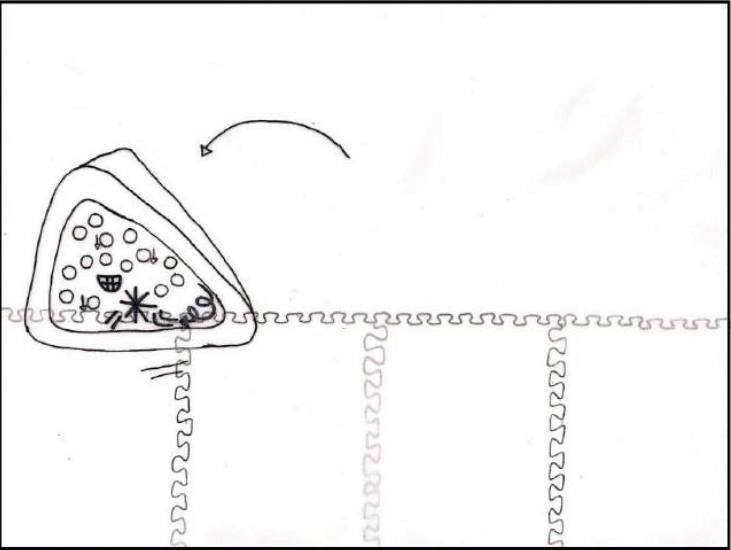
Figure 07 Baby keeps crawling and smiling as she rolls the hut and makes the balls fall on her. Recorded by Julia Costa (2019).

Figure 09 Overlapping of Figures 05, 06, 07, and 08. The baby's movement in its relationship with the hut object and its plastic balls. Recorded by Julia Costa (2019).
In this sequence of images composing the cartography of the addressed scene, the importance of the objects in the baby’s action is highlighted. The tent and plastic balls allowed her to act this way. In other words, as we have seen, according to Latour (2012), these objects are also actors of action.
It is interesting to see how the baby transformed the space and gave a new meaning to the hut they use to play inside simply. By using it in a way that we in the room did not know, the baby reconfigures the space, produces new territorialities, which in Maia’s (2006) perspective is understood not as a physical space but as a set of relationships that take place in that space, the creations lived in it. The author clarifies the concept:
Territory, in this approach, becomes not a place, but an action and, precisely because of this, not territory, but territorialization. The territory is multiple, has multiple components, is always a matter of differences in dynamic relationships. Every form, every agency, every expression, and function for any content, whether material or not, constitutes territoriality. It is not an appropriation of a means given by a particular living being but a connection of machines that capture, delimit, and encode the flow of desire. (Maia, 2006, p. 57).
Thus, in her action with the tent, the baby creates new territoriality from the encounter and relationship with hut and balls objects.
The baby in the scene was open to discovering what would happen if she “crawled on the side, wall of the tent” and surrendered to the event. She surrendered to the details of the balls falling on her and the feeling it caused her, smiling.
It took a few seconds, which made her repeat the same action over and over again on other days at the day care. From her relationship with the hut object and its balls and the movement she produced in the hut, we can say that an individuation process occurs, modifying the baby. From this relationship, the addressed baby is no longer the same. She starts to constitute herself as a baby capable of making the hut roll and the balls fall on her. In other words, the baby’s constitution is made concerning the materiality of the space. Also, the space is transformed, and objects gain new uses from the technique developed by the baby.
scene 2- “babies jumping from the toy box”2

Figure 10 Cartography caption of Scene 2 “Babies who jump out of the toy box.” Recorded by Sabrina de Oliveira (2019).

Figure 11 Base Map of Scene 2 cartography “Babies that jump out of the toy box.” Recorded by Sabrina Oliveira (2019).
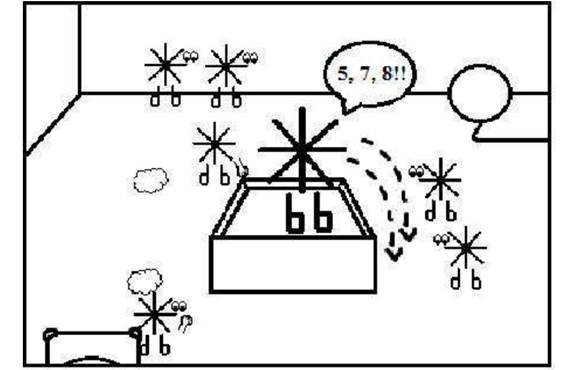
Figure 13 A baby jumps out of the box while other babies watch the scene. Recorded by Sabrina Oliveira (2019).
The scene, recorded by Sabrina Oliveira, takes place in a nursery room of a Brazilian day care center, where a toy box plays an essential role in a collective individuation process. It involves a group of babies who, from this scene onwards, change and become configured in “box-jumping” babies. We can look at the scene, whose caption we present below, and the maps that make up the scene in the sequence.
This Cartography represents a group room I of Early Childhood Education in the city of Campinas3. On this day, the classroom teacher planned an activity for all babies: dolls, clothes, and baby bathtubs. A yellow box was placed in the room center with several dolls inside for the babies to approach and choose a type of doll. While the babies explored the materials, the teacher and the other educators took turns changing diapers.
After a few minutes of exploring the material and consequently emptying the box, the babies, alone, turned it upside down and climbed, one at a time, to jump on the mat. The rest of the toys were scattered on the floor.
At the moment captured by the camera, there are nine babies in the room. Six of them appear in the first few seconds of the video with their eyes focused on the baby jumping out of the box. The captured scene shows a baby climbing on the yellow box, performing a count, and jumping on the floor.
When the jump occurred, another baby approached the box and supported her hand on the jumping one. As soon as she finished the jump, this baby climbed on the box too. At this moment, another baby on the other side of the box gestured while the other baby counted to jump. After the jump, three babies supported their hands on the box, but only one climbed. One of them was unable to approach the box as another baby pulled him. The jumping baby rolled across the floor. Then another smiling baby appeared, threw a pacifier on the floor, and approached the rolling baby.
In the back of the room, two other babies remained watching the scene.
Based on the reflection of the moment mapped above, it is possible to think about the educators’ proposal. The intention was to offer an activity with dolls, washcloths, clothes, and toy bathtubs. However, what actually happened?
In the scene analysis, it is possible to clearly see that the toys offered to the babies were scattered on the floor. The yellow box, the main object (central) for the execution of the scene, was the protagonist, which allowed other actions and gazes. It is noteworthy this action the babies performed, at no time, was guided by an adult but was made possible from the relationship of the babies with the materiality of the space. One of the babies simply turned the box and jumped towards the floor. This action affected the other babies, and some of them approached and began to have a relationship with that box. The role of objects in babies’ daily experience is also evidenced in the following scenes, one recorded during the moment of free exploration of space and the other recorded at the time of feeding, both in a French micro day care center.
scene 3 - directionality of a baby’s movements

Figure 15 Abby's directionality in a French day care center. Recorded by Maria Antonieta Impedovo (2019). Source: Impedovo and Tebet (2019)
Scene 3, taken from Impedovo and Tebet (2019), records a baby’s movements (Abby - 9 months) represented by an 8-pointed star and her displacements around the room. While the object-oriented displacements (towards an object) have traces of the path are represented here by dotted orange lines), those person-oriented (towards a person) have traces represented by a continuous black line. This record highlights how objects present in space mobilize the displacement and experiences of this baby in the day care center.
scene 4 - snack time at a french micro day care center4

Figure 19 Objects that act at snack time and their dispositions in space. Recorded by Gabriela Tebet.
Scene 4 reveals micro geography that builds generational identities and creates different statutes for babies and children, marked by a direct relationship with objects and space. In this scene, we see two tables where the meal and snacks take place. One of the tables has chairs with armrests and the other, chairs without armrests. For those occupying the first table, glasses with a lid and spout are offered. For those who occupy the second table with chairs without armrests, cups without a lid are offered. There is a different social status for those sitting at one or another table, use these or those cups. Also, there is a third place, with another materiality: an armchair where the bottle is offered.
In this scene, the older children occupy the first table, and the younger ones occupy the second table. However, there is a baby who is standing on the table occupied by the older children. Upon arriving at the space, the teacher puts a bib on two of the younger children (the bib shows a differentiation made by their teacher compared to the others). Then she takes the baby in her arms, pulling him away from the older children’s table and taking him to be fed away from all the other children, in her lap, in the armchair.
discussion
From the mapped scenes, studying babies in the context of Early Childhood Education is understood as requiring a careful look at everyday relationships and their materialities. These play an essential role in the individuation process. It consists of being with them, participating in their experiences, and trying to understand what babies say through their gestures, cries, babbles, and even their non-expressions in the environment. Therefore, studying group individuations in Simondon (2020) helps to understand the grouping produced in the day care center, a space that is so heterogeneous and full of countless possibilities. Thus, it is possible to reflect on whether and how the day care environment or the context of Early Childhood Education provides and encourages collective individuation. It enables us to understand which characteristics of this group individuation are present in the day care, even questioning whether babies constitute or form such groups.
Several questions arise when analyzing scenes that are so short in time but rich in details and relationships. Evidently, all the objects available in the scenes were brought, planned, and purchased by adults. But what about babies? What do babies’ actions, and what do babies’ relationships to objects tell us? Furthermore, could the described scenes give rise to some conception about the objects present at that moment, in that scene with the babies?
For example, the reflection of the moment in scene 2 makes it possible to think about the educators’ proposal. The intention was to offer an activity with dolls, washcloths, clothes, and toy bathtubs. However, what actually happened?
The scene analysis enables us to clearly see that the toys offered to the babies were scattered on the floor. The yellow box, the main object (central) for the execution of the scene, was the protagonist, which allowed other actions and gazes. It is noteworthy that no adult guided the babies when performing this action. The babies simply turned the box on their own, and one of them jumped towards the floor. We observe the same occurrence in scene 1 when the baby simply starts to move, making the balls from the hut fall on her.
Evidently, the objects in the scenes are actors who mobilized an action. Also, the involved babies, since their actions modify and recreate what has been established.
Latour’s studies on actor-network theory are relevant in this perspective, as they bring conceptions that objects also act. The conceptions of this theory consider human and non-human actors as powerful associations established within the social field.
ANT thus became a possible perspective to think about what is not defined a priori but part of the results of relationships established within this network. Thus, thinking about social factors and aggregates is to escape the logic of representation, potentialities, and fixedness (Pontes, 2020, p. 32-33, translated by authors).
Kontopodis (2012) conducted a survey in Berlin, Germany, verifying the agencies and relationships established in some scenes of children’s daily life with children from a kindergarten. He analyzed eating practices and, based on them, enabled the understanding of agency:
I speak of agency as the ability to directly or indirectly influence or determine how something is done. This ability can be distributed in time and space. It can also refer to a group or network of agents and not just to an entity, depending on the addressed configuration. Agency in this conception is a relational concept and is not context-free (Kontopodis, 2012, p. 02. Free Translation)
The scenes described by Kontopodis (2012) involve everyday objects, not complex technologies. Instead of looking only at cognitive processes or objects, the author draws a relationship between them, considering they are involved in the same network.
final considerations
The debate proposed in this article highlights the materiality of the individuation processes experienced by babies. Also, how offer, organization, and relationship established with the materials are essential for those working in early childhood education.
Babies’ exploration of the materiality of objects “expands” the meaning of objects. Thus, the experience comes to be understood as a potential for continuous transformation crossing the borders suggested by the materials.
The study shows how the material dimension is already present in the curriculum and awareness of teachers, adults, and manufacturers of toys and furnishings in the daycare. However, we believe that the active role of the material object on babies’ development and their ability to act in the world remains implicit. The object remains “to be used” and is not fully considered an agent that will influence the action, the relationship, and the relational dynamics.
Simondon’s perspective justifies this gaze of the object in its autonomous process of influence. The technical object has a previous history (conceived and designed by the manufacturer) which is then interpreted and activated.
The complexity level of the technical object also opens up reflections on the socio-economic dimension where babies live. How and to what extent does the technical object’s complexity influence cognitive and social skills development? What changes in the process of identifying a comparison with simple objects, such as pacifiers or amber ‘teething’ necklaces, with complex objects, such as strollers, cribs, radio, television, or IPad? These reflections show the need to continue exploring the technical object to plan, facilitate, or support the experiences of babies’ lives in the social and economic diversity confronting them. For this reason, the analysis of the curriculum and the comparative approach between programs, such as between Brazil and France, becomes interesting for identifying study paths. The diversity of objects and their use should be considered an opportunity to intervene intentionally. Some objects are incorporated immediately by the babies, and others will be carriers of technical messages that can give discussion points for the child - scientific thinking (for instance, how radio links to the concept of waves). Here the technical and scientific culture enters the reaction of the child and the object. What is the impact of the baby-technical object interaction in the awareness of a scientific culture? How to urge the baby to create ever more complex and technically based technical objects?
The creative meeting of babies and objects entertains the space of the possible. This space can be left free on the different levels: free to facilitate the creation of the handlebar to stimulate technical knowledge. The cartography of the relationship between baby and object diversifies the intertwining of the rifle, allowing to explore new territoriality from the baby’s point of view (arrives in the cousin and example proposed by the hut); of collective appropriation of the object (as in the second and impious proposal of the box); of intentionality acted at the moment (as in the example of directionality). The micro-sequences analyzed offer illustrative conceptual examples but also a methodological approach to analysis. Future studies will be proposed to analyze the process of transformation of the technical object over time by the babies and children, in more or less long sequences (hours, days, or weeks) and the creative process of the technical object in its growing complexity (from the simplest at the most complex technical object).














